Studies show that a strong personal brand can make you more visible and increase your income by over 20%. One survey also found that people trust individuals 70% more than companies. So, it’s clear. First, you build a connection. Then, business follows.
We've gathered the 10 strong personal branding examples that can help you get ideas for your own brand. Each person on this list created a presence that feels personal and authentic. It sticks with people even after their posts, products, or performances are gone.
Want to learn more? Let’s dive in!
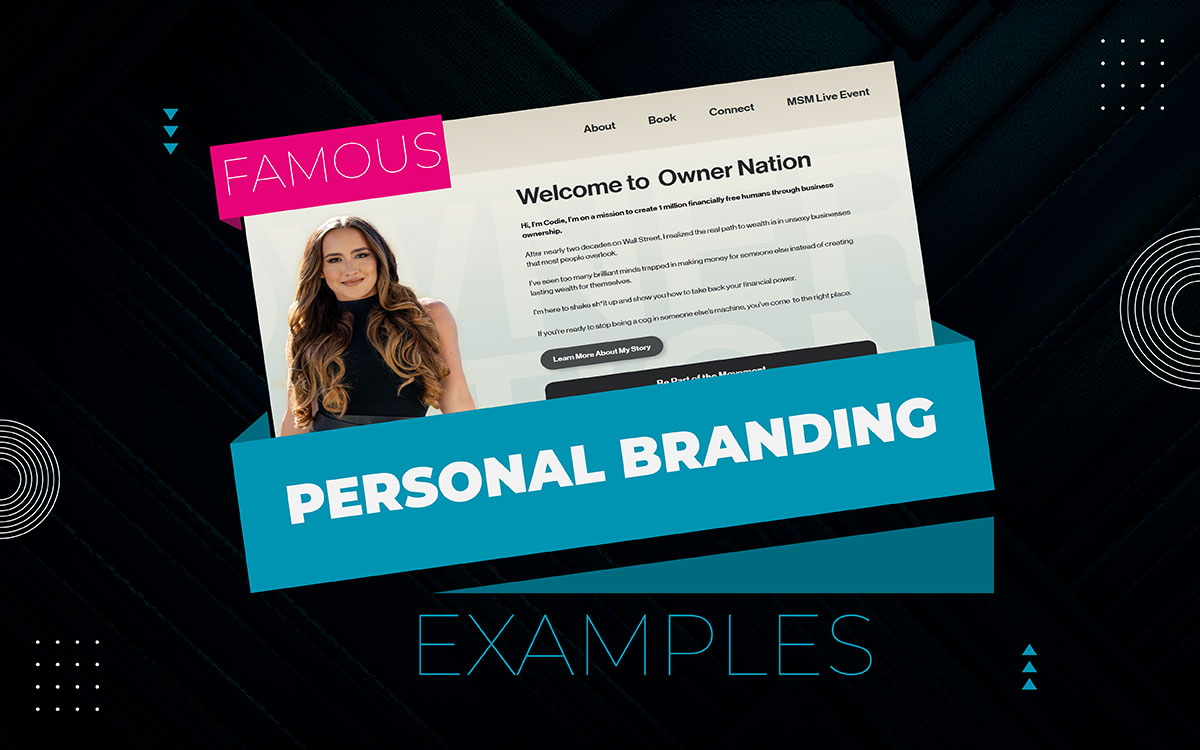
Every great personal brand starts with a story. It’s not about a logo or a big plan. It’s about someone deciding to be themselves over and over, until people notice and remember.
The people below did just that. Some built huge businesses. Others built trust. They all made their names mean something more.
Below, we've compiled a list of 10 famous personal branding examples to give you inspiration, real connections, starting movements, and left a mark that we can follow.
Keep reading to learn from their success!
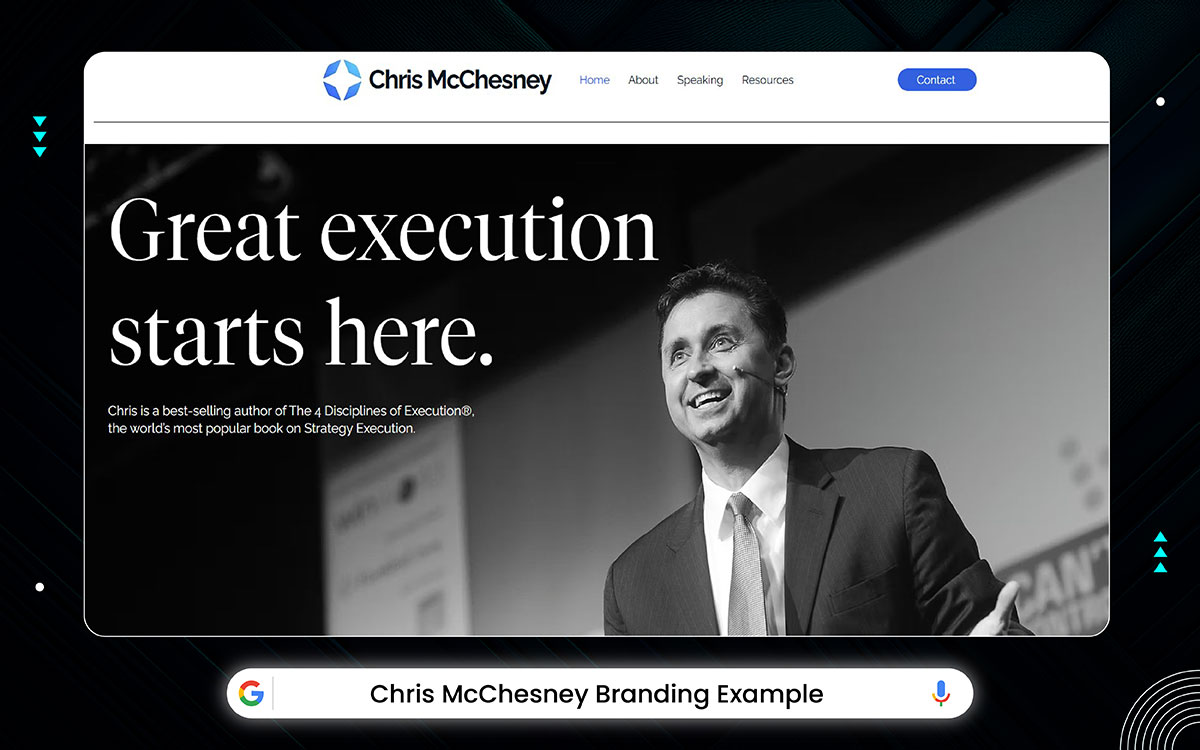
Chris McChesney co-wrote The 4 Disciplines of Execution (4DX) and has been helping leaders for years. His job is to help companies take big goals and break them down into small actions.
Chris is known for one main idea: creative personal branding ideas don't matter if you don't put them into action. With 4DX, he helps teams turn plans into real habits. This means setting clear goals, measuring the right things, using scoreboards to track progress, and sticking to a weekly routine.
When Chris speaks, he's straight to the point. He doesn’t rely on catchy slogans. Instead, he gives teams tools they can use right away. After his workshops, teams leave with a simple plan they can follow starting Monday morning.
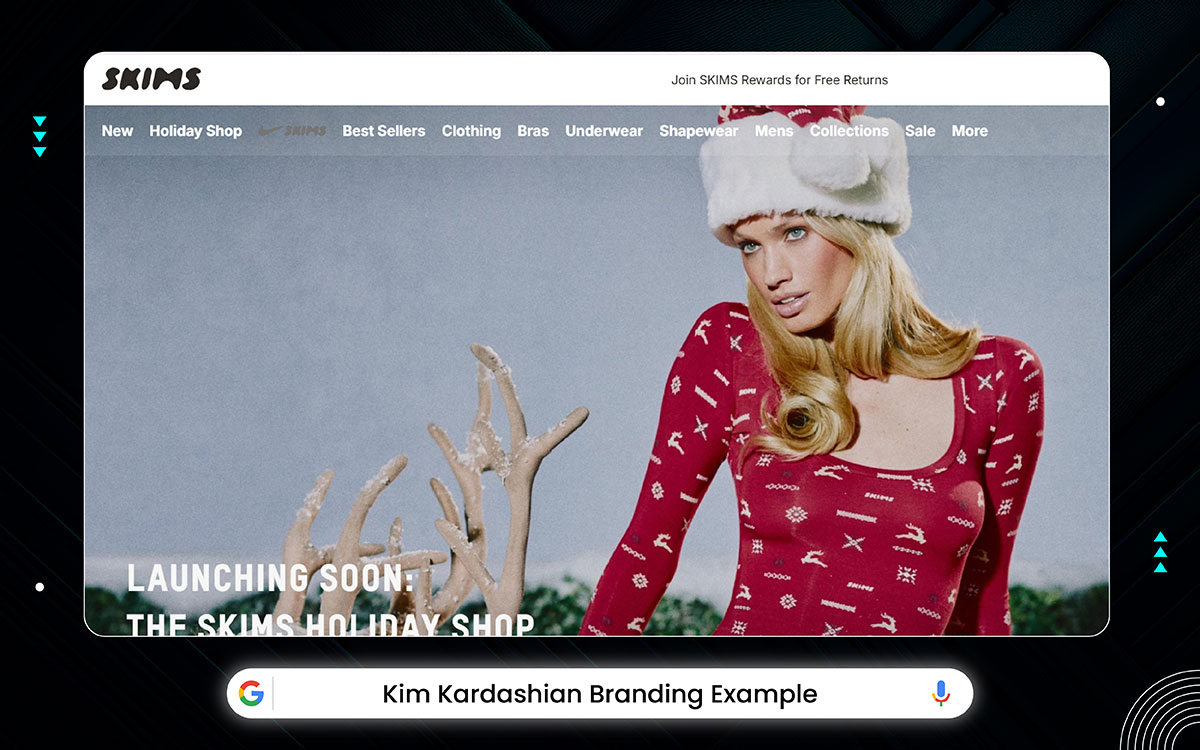
Kim Kardashian is an American businesswoman and a famous media personality. She started SKIMS, a clothing line that includes shapewear, and it’s now worth billions. She also created SKKN, a skincare brand. Kim has turned her fame into a big business success. Today, her name is one of the most well-known in fashion and lifestyle.
Kim Kardashian used her popularity to build a huge global brand. Her shapewear line, SKIMS, is now worth billions of dollars. What started as just being in the spotlight has grown into a major business empire.
Her success shows how she controls her image. Everything she does, SKIMS, SKKN, even her social media, is simple and calm. Her style is all about clean, neutral colors and smooth textures. She built a brand where everything feels consistent and luxurious. People like things they can trust, and Kim has made predictability something people want.

Steven Bartlett is a British businessman and investor. He runs a podcast called The Diary of a CEO, one of the most popular business shows in the world. He’s also a judge on the BBC show Dragon’s Den. His work is all about leadership, mindset, and what it really means to build a company.
Steven built a brand that feels close and real. He started out after dropping out of college, driven by determination. Over time, that drive turned into something calmer and wiser. The Diary of a CEO isn’t loud or flashy. It’s quiet, thoughtful, and full of lessons that make you stop and think.
The podcast’s huge success and his role on Dragon’s Den made him known for his calm confidence. Everything about his style creates a space where people don’t just scroll by. They stop. They listen.
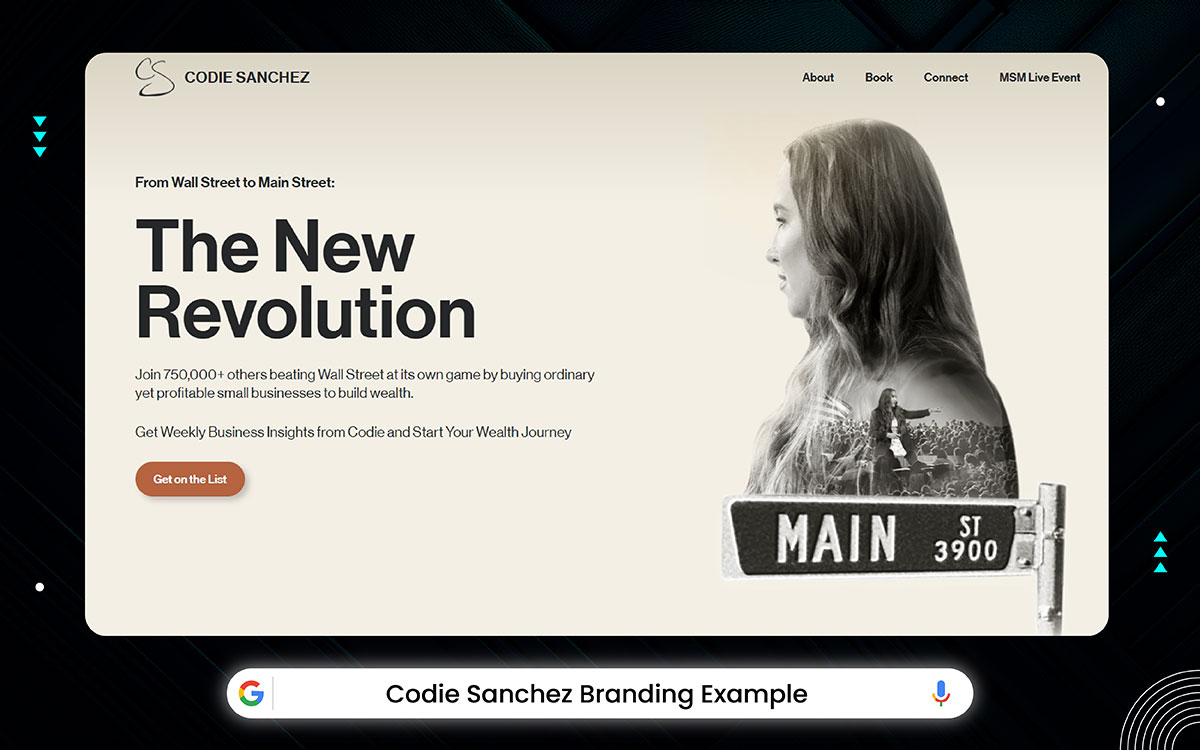
Codie Sanchez is an investor. She started Contrarian Thinking, a platform that teaches people how to get financial freedom by buying small businesses. She used to work in journalism and private equity. That gives her both credibility and curiosity. She knows her stuff and asks questions most people don’t.
Codie grew her brand by asking the tough questions no one wants to ask. She talks about money like it’s a story, with conflict, problems, and consequences. Her idea is simple but different: buy “boring” businesses, improve them, and earn back your time.
Through Contrarian Thinking, Codie reaches millions every week. People follow her newsletter, podcast, and social media. She turns learning about money into a movement. Her posts are clear and direct. No fake filters, no fluff. You can almost hear her voice when you read them; fast, smart, and confident.

Alex Hormozi runs a company called Acquisition.com. They help other businesses grow and invest in them. He also wrote the “$100M” business books.
Alex didn’t try to look like a businessman. He wanted to be known as a builder. You can tell he works hard. You notice it in the spreadsheets, the gym, and the long nights he spends on numbers. His company handles over $100 million in businesses. His books, $100M Offers and $100M Leads, are now must-reads for people who want to start or grow a business.
He talks about growth and business in a very clear way, like a craftsman talking about wood. He gives details and doesn’t like shortcuts. His style is a mix of intensity and generosity. You can feel his discipline even before he starts talking.

Dan Martell is a Canadian entrepreneur and coach. He wrote a book called Buy Back Your Time. He helps business owners manage their time, organize their teams, and work more efficiently.
Dan didn’t become successful overnight. He built his career slowly; step by step, day after day. Before he was on big stages or writing bestsellers, he focused on one thing: showing up and doing the work.
His story is something many people can relate to. He went from struggling and feeling scattered to being focused and full of purpose.
That’s why he’s such a great personal branding example for anyone who wants to turn their knowledge into influence. Dan doesn’t just talk about motivation. He teaches systems that make it happen. Through his book and his coaching, he’s turned his own habits and discipline into a clear path others can follow.
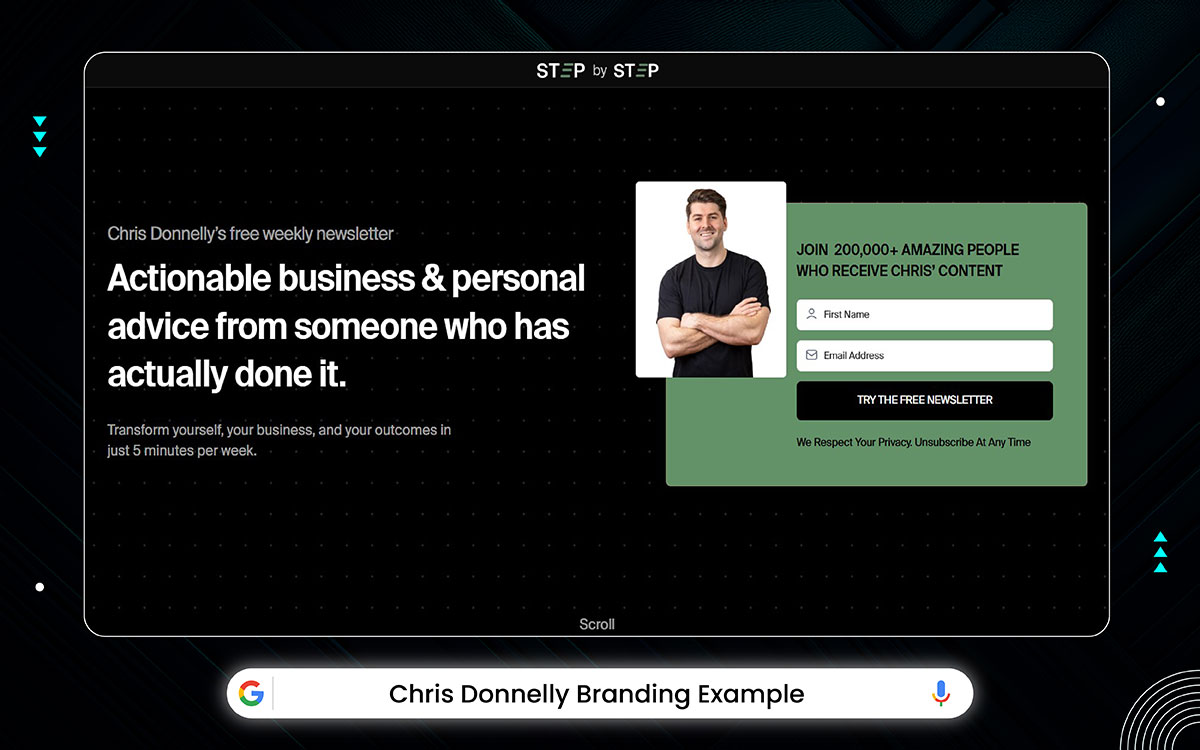
Chris Donnelly started Verb Brands, a digital agency in London that works with luxury companies. His team creates online strategies and campaigns for high-end brands.
Chris built his company on creativity and honesty. He began as a designer who saw luxury not just as something expensive, but as a special feeling. Through Verb Brands, he helped big global brands feel more real and human.
His rule for personal branding is simple: be clear before trying to be clever. That’s what makes him different in a world where many people care more about looks than real meaning.
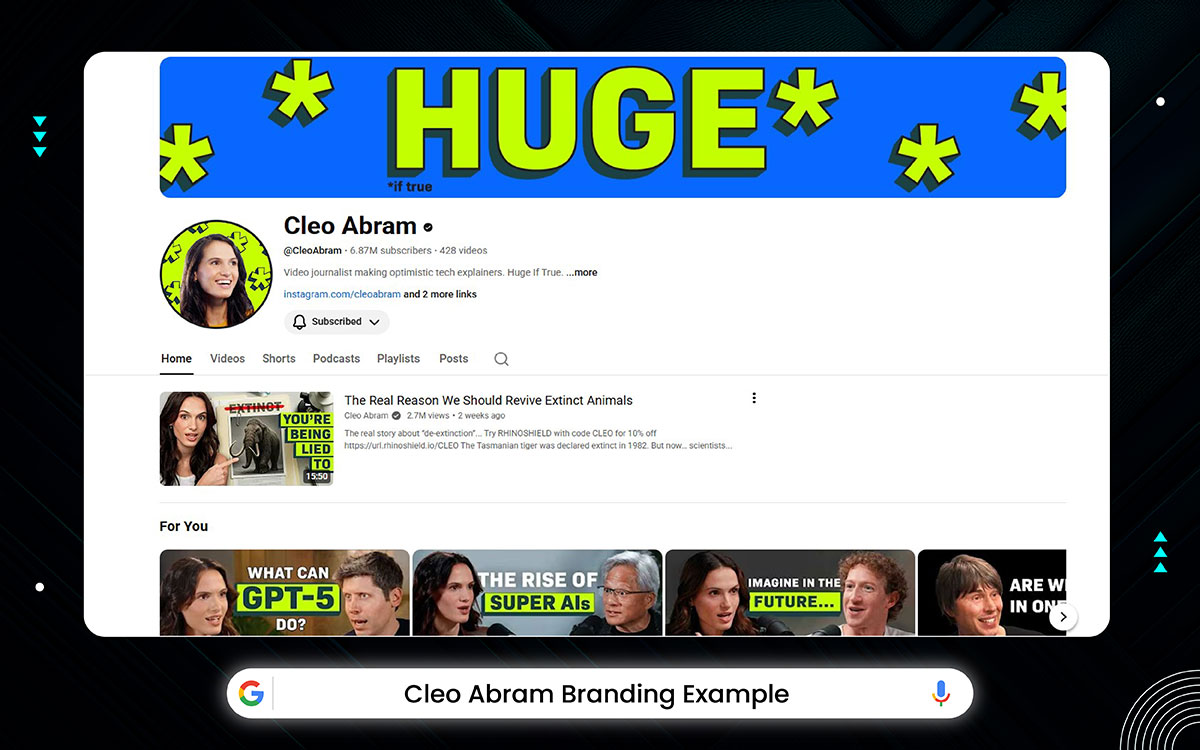
Cleo Abram is a journalist and video creator. She used to work at Vox and now hosts a YouTube show called Huge If True. In her videos, she talks about science and technology in a way that’s easy to understand and exciting to watch.
Cleo has become one of the most well-known people in digital journalism. She’s been nominated for an Emmy and once worked as a producer at Vox. Now, she runs her own show, where she explains big ideas about how the world works.
Her videos reach millions of viewers online. She’s incredibly curious. Cleo takes complicated topics and turns them into stories people actually want to listen to. Every moment in her videos shows her mix of optimism and careful detail.

Adam Erhart is a marketing expert who teaches people how to grow their businesses. He runs his own brand and shares what he knows through YouTube videos and online programs. His advice is simple and easy to use, especially for small business owners.
Adam became known by doing something unusual; he slowed down. Instead of chasing trends, he built a brand that focuses on clear, honest marketing. His company offers courses, workshops, and strategy programs that help small businesses grow without tricks or hype.
His YouTube channel feels like both a class and a friendly talk. Millions of people watch because what he says makes sense and actually works. Everything about his videos feels calm—cool colors, clean backgrounds, and a slow, steady pace that gives you time to think.

Jeremy Miner started a company called 7th Level. He also created a selling method called NEPQ. It’s all about asking the right questions and using psychology to sell without pressure.
Miner doesn’t try to sell. He listens. His voice is calm and steady, like someone telling you something important but kind.
His company, 7th Level, teaches people how to sell in a way that feels real and natural. No pushing. No fake pitches. Just smart questions that help people open up.
Every lasting name begins with something simple, a story, a reason, a spark. The famous personal branding examples above prove that a real brand doesn’t start with graphics or fonts; it starts with truth. Once you know why you’re here, the rest of the steps just fall into place automatically.
Building a personal brand feels like design work that never really ends. You sketch, erase, and redraw until what’s on the page finally feels like you.
Start with your “why.” It’s easy to copy trends; it’s harder to know what you actually care about. Ask what kind of work you’d still do if no one was watching. That answer will guide your choices later; colors, tone, even the way you speak online. Purpose steadies the hand when everything else shifts.
Think of this as language people can see. Pick colors that match your pace, not the market. Maybe muted tones if you move slow, something louder if you don’t. Use words that sound like you on a good day. Keep a few things messy on purpose; perfect visual design rarely feels human. The goal isn’t polish; it’s recognition.
People remember honesty more than campaigns. Talk back. Answer comments. Show the unfinished bits, sketches, mistakes, notes in the margin. When you share what it takes to get somewhere, people start walking with you.
Look at those who did it right. They didn’t copy; they observed and adapted. Notice how they keep their tone steady while the platforms change. Study how clarity feels more powerful than perfection. Then twist those lessons into your own shape, applying lessons from America’s most influential personal brands.
Finally, our personal branding article comes to an end! The 10 famous personal branding examples above show how reputation grows through small, consistent choices that slowly build trust. Every story you’ve read here proves one thing, identity is designed, not declared. No shortcuts, no filters, just rhythm and honesty.
Your personal brand will take shape the same way: through tone, patience, and the courage to sound like yourself even when no one’s watching. It’s not about perfection. It’s about being remembered for the right reasons.
Keep showing up. Keep refining the edges until they feel like you. That’s the work every great brand quietly commits to the art of becoming unmistakable.
To create a brand identity that looks and feels like you, you can hire a branding design agency! Graphic Design Eye provides complete branding design services, giving you everything you need to get started with confidence. We're here to guide you through every step of personal branding.
For any query or suggestion, you can contact us for free. Till then, wishing you a productive and inspiring day ahead!